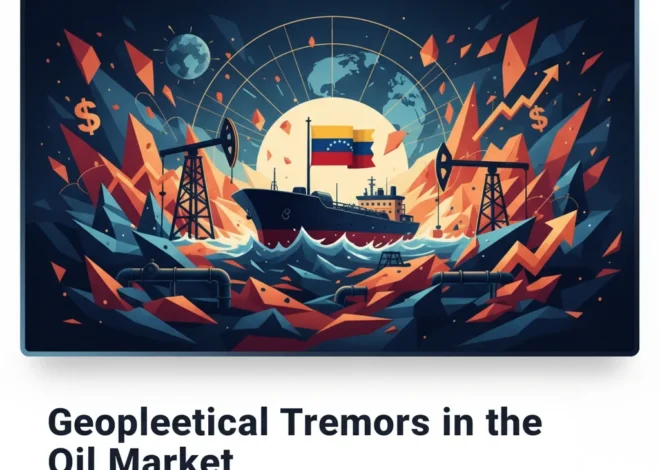
The Financial Crossword: Solving the Complex Puzzle of Modern Investing and Economics
The global financial landscape can often feel like a cryptic crossword puzzle. Each clue—a market trend, a new technology, an economic report—is a piece of a larger, interconnected grid. For investors, business leaders, and even the curious observer, solving this puzzle is not just a matter of intellectual curiosity; it’s essential for navigating the complexities of wealth creation and economic stability. Just as a seasoned crossword solver sees patterns and connections where others see only blank squares, a savvy financial professional understands how disparate elements like banking policy, fintech innovation, and stock market sentiment intersect to shape our world.
Inspired by the intellectual challenge of puzzles like the FT Crossword, this article will serve as your guide. We will deconstruct the modern financial puzzle, clue by clue, to reveal the underlying logic and interconnectedness of its key components. By understanding the “across” and “down” answers that define today’s economy, you can move from being a spectator to a strategic player, equipped with the knowledge to make more informed decisions.
ACROSS: Decoding the Foundational Pillars
Every great puzzle starts with the cornerstone entries—the long, foundational answers that provide the structure for everything else. In finance, these are the macroeconomic and institutional forces that set the stage for all activity.
1 Across: The grand stage for all market activity (7 letters) – ECONOMY
The economy is the bedrock upon which all financial activity is built. It’s the sum of all transactions, production, and consumption within a country or region. Understanding its health is paramount for any investor. Key indicators, or “clues,” to its direction include Gross Domestic Product (GDP), inflation rates, and employment data. For instance, the International Monetary Fund (IMF) projects global growth to remain steady at 3.2% in 2024 and 2025 (source). A growing GDP often signals corporate profitability and a bullish stock market, while high inflation can erode purchasing power and prompt central banks to raise interest rates, which can cool down the market.
For business leaders, these macroeconomic trends dictate everything from supply chain logistics to consumer spending power and capital investment strategies. A firm grasp of economics isn’t just academic; it’s a vital tool for risk management and strategic planning.
7 Across: The circulatory system of capital (7 letters) – BANKING
If the economy is the stage, the banking system is its circulatory system, pumping capital to where it’s needed most. Central banks, like the U.S. Federal Reserve or the European Central Bank, set the rhythm with monetary policy—controlling interest rates and money supply to manage inflation and promote stable growth. Commercial banks, on the other hand, are the arteries and veins, facilitating loans for businesses, mortgages for homeowners, and the day-to-day transactions that power commerce.
The health of the banking sector is a critical indicator of overall economic stability. Its ability to lend, manage risk, and adapt to new regulations directly impacts everything from small business creation to large-scale corporate mergers. The ongoing digital transformation in this sector is a pivotal storyline, leading us directly to our next set of clues.
Puma's Painful Pivot: Can 900 Job Cuts Close the Gap on Nike and Adidas?
DOWN: The Disruptive Forces Reshaping the Grid
No modern crossword is complete without fresh, contemporary vocabulary. In finance, these are the technological disruptors that are changing the rules of the game, creating new pathways and connections across the grid.
2 Down: Technology disrupting traditional money management (7 letters) – FINTECH
Financial Technology, or Fintech, is revolutionizing how we interact with money. It’s a broad term encompassing everything from mobile payment apps and robo-advisors to peer-to-peer lending platforms and digital-only banks. By leveraging technology to enhance efficiency, accessibility, and user experience, fintech companies are challenging the dominance of traditional financial institutions. The global fintech market is a testament to this disruption, with a projected value expected to reach approximately $608 billion by 2029 (source).
This shift has democratized access to sophisticated financial tools, allowing individuals to engage in trading and investing with unprecedented ease. Below is a comparison of how fintech is reimagining traditional banking services:
| Traditional Banking Service | Fintech Alternative & Its Advantage |
|---|---|
| In-Person Wealth Management | Robo-Advisors: Automated, algorithm-driven portfolio management with significantly lower fees and minimums. |
| Bank Loans / Credit Cards | Peer-to-Peer (P2P) Lending: Online platforms connecting borrowers directly with investors, often offering more competitive rates. |
| Wire Transfers / Remittances | Digital Payment Platforms: Near-instant, low-cost international money transfers via mobile apps (e.g., Wise, Remitly). |
| Brick-and-Mortar Branches | Neobanks (Digital-Only Banks): Fully digital banking experience with lower overhead, often resulting in no monthly fees and higher savings rates. |
4 Down: A distributed ledger promising transparency (10 letters) – BLOCKCHAIN
Often mistakenly conflated with cryptocurrencies like Bitcoin, blockchain is the underlying technology that offers a far broader set of applications. At its core, it is a decentralized, immutable digital ledger. This means that once a transaction is recorded, it cannot be altered, providing an unparalleled level of security and transparency. This has profound implications for finance beyond digital currencies.
In banking, blockchain can streamline and secure cross-border payments, reducing transaction times from days to minutes. In the stock market, it can revolutionize trade settlement and clearing processes, reducing counterparty risk. Furthermore, with the rise of “smart contracts”—self-executing contracts with the terms of the agreement directly written into code—blockchain is paving the way for decentralized finance (DeFi), an entire ecosystem of financial applications built on blockchain networks without the need for traditional intermediaries.
The Billion Insurance Shake-Up: Why Private Capital is Targeting Brighthouse Financial
INTERSECTIONS: Where Strategy Meets Action
The true magic of a crossword happens at the intersections, where across and down clues meet to confirm an answer. In finance, this is where broad concepts translate into personal action—the realms of trading and investing.
5 Down: The art of buying and selling for short-term gain (7 letters) – TRADING
Trading is the active, short-term strategy of buying and selling financial instruments to profit from market fluctuations. Traders rely heavily on technical analysis, market news, and economic data to make rapid decisions. The rise of zero-commission online brokerage platforms, a direct result of fintech innovation, has made active trading accessible to millions. However, it’s a high-risk, high-reward endeavor that requires discipline, a deep understanding of market dynamics, and a strong stomach for volatility. It is fundamentally different from its long-term counterpart, investing.
8 Across: Allocating capital for long-term growth (9 letters) – INVESTING
While trading is a sprint, investing is a marathon. It involves strategically allocating capital to assets like stocks, bonds, and real estate with the goal of long-term appreciation. The core principle of investing is to leverage the power of compounding and the overall upward trajectory of the economy over time. Successful investing is less about timing the market and more about time *in* the market. It relies on fundamental analysis—evaluating a company’s financial health, its position in the industry, and its long-term growth prospects.
A well-diversified portfolio, tailored to an individual’s risk tolerance and financial goals, remains the most proven path to building wealth. While less glamorous than the fast-paced world of trading, a patient, long-term approach is what turns today’s savings into tomorrow’s financial security. An estimated 61% of U.S. adults reported owning stock in 2023, showcasing the widespread adoption of investing as a cornerstone of personal finance (source).
The Future Is Tradable: How Crypto ETPs Are Making Bitcoin and Ethereum Investing Simple and Secure
The Completed Puzzle: A Clearer Financial Picture
By filling in the clues—from the foundational “Across” answers of Economy and Banking to the disruptive “Down” forces of Fintech and Blockchain—a clearer picture of the modern financial world emerges. We see how these elements don’t exist in isolation but intersect and influence one another, creating the complex grid that we must all navigate.
Understanding these key terms is the first step. Recognizing their interplay is the next. The final and most crucial step is using this knowledge to inform your own strategy, whether you are leading a business, managing a portfolio, or planning for your own financial future. The financial crossword is ever-evolving, with new clues and answers appearing all the time. But with a solid grasp of the fundamentals, you’ll be well-equipped to solve it, one square at a time.


